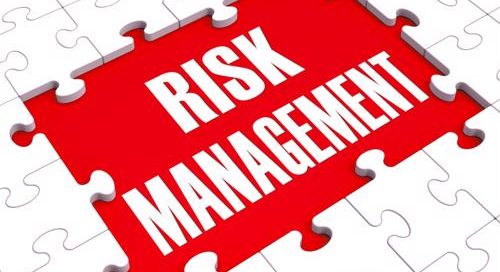The more businesses rely on complex IT networks and environments, the more susceptible they are to unforeseen operational disruptions. There are any number of issues that could affect network functionality, service availability and your overall business standing. Problems can creep up around every corner, which is why it's vital that small and medium-sized businesses account for every contingency and plan for the worst.
The goal of risk management is to identify potential issues and address them before they can negatively impact your business. Risk management is such a vast concept that SMB stakeholders don't always know where to even begin. Don't let indecision evolve into paralysis; every business needs to adhere to risk management best practices to avoid any costly incidents. To help you get started on the road to risk management excellence, consider these three key focus areas:
1. Disaster recovery and business continuity
Disaster recovery is a lot like insurance: You don't think you need it - until you really need it. The problem with disaster recovery is people tend to get caught up on the idea of what constitutes a "disaster." They might think of it solely in terms of natural phenomena such as earthquakes, hurricanes and floods. If their businesses aren't located in high-risk areas, they might erroneously believe that they don't need disaster recovery.
But what if a critical service provider is located in a high-risk area? If their data center is impacted by such an event, businesses may not be able to access important applications and platforms. That's why it's always important to vet your New York IT services vendors and ensure they have proper disaster recovery protocols in place in the event that the unthinkable happens.
"You need to be able to minimize downtime and bring network functionality back to normal."
Of course, disaster recovery encompasses much more than natural events. Garden-variety outages can take business networks at inopportune times, grinding productivity down to a halt and preventing companies from providing customers with the quality and speed of service they expect.
In such moments, you need to be able to minimize downtime and bring network functionality back to normal levels as quickly as possible. Disaster recovery solutions provide failover options in the event that your on-site IT assets are unable to perform as expected. They can also provide some much-needed backup if your primary data center goes down.
2. Cyber security concerns
2017 was yet another bad year for the cyber security community, and 2018 isn't looking any better. Forbes contributor Gil Press predicted that the growth of the Internet of Things will create new vulnerabilities for cyber criminals to exploit. On top of that, ransomware continues to be a highly effective attack strategy, encrypting data and extorting thousands of dollars from victims. The prevalence of botnets makes distributed denial-of-service attacks as easy as ever to launch and overwhelm intended targets.
SMBs need to do everything in their power to stay one step ahead of cyber criminals. In this context, risk management should include diligent system updating and patching protocols, employee training to increase threat awareness and adherence to modern cyber security strategies. Monitoring tools are essential in this day and age when networks are porous and easily compromised, and zero-day exploits could arise at any time. Businesses that assume they will be breached and act accordingly are better off than those that solely invest in perimeter defenses. The focus today is on breach remediation, rather than outright prevention.
 SMBs need to make cyber security a major priority in 2018.
SMBs need to make cyber security a major priority in 2018.3. Regulatory compliance demands
Compliance requirements go hand in hand with cyber security needs. Just about every business sector has governmental or industry-specific regulations dictating how data is collected, stored and used in precise detail. This is no secret to members of the health care community, as HIPAA and HITECH have drastically altered the way electronic medical information is handled over the past several years.
There is a new regulation sitting just over the horizon that promises to upend business operations across the globe. The European Union's General Data Protection Regulation will go into effect May 2018, and put into place strict requirements regarding the collection and use of consumer data in that region.
It's important to keep in mind that even businesses located outside of the EU will be impacted by this new set of guidelines. Anyone who processes European consumer data must adhere to GDPR.
The new regulations are extensive, touching everything from how customer data is collected and for what purpose to how consent forms are written up and presented. It's a lot of ground to cover, and CSO Online expects a large number of businesses to be unprepared to comply with GDPR when it goes into effect a few months from now. Moreover, don't be surprised if regulators make an early example out of an organization to show that GDPR has teeth.
These three key areas are great starting points to ramp up your risk management strategies. Each one presents a considerable impact to ongoing business operations. To effectively meet these challenges, work with the very best IT service provider NYC has to offer. TEKConn is here to help you minimize your risk exposure and maximize your revenue streams.

Leave a comment!
You must be logged in to post a comment.